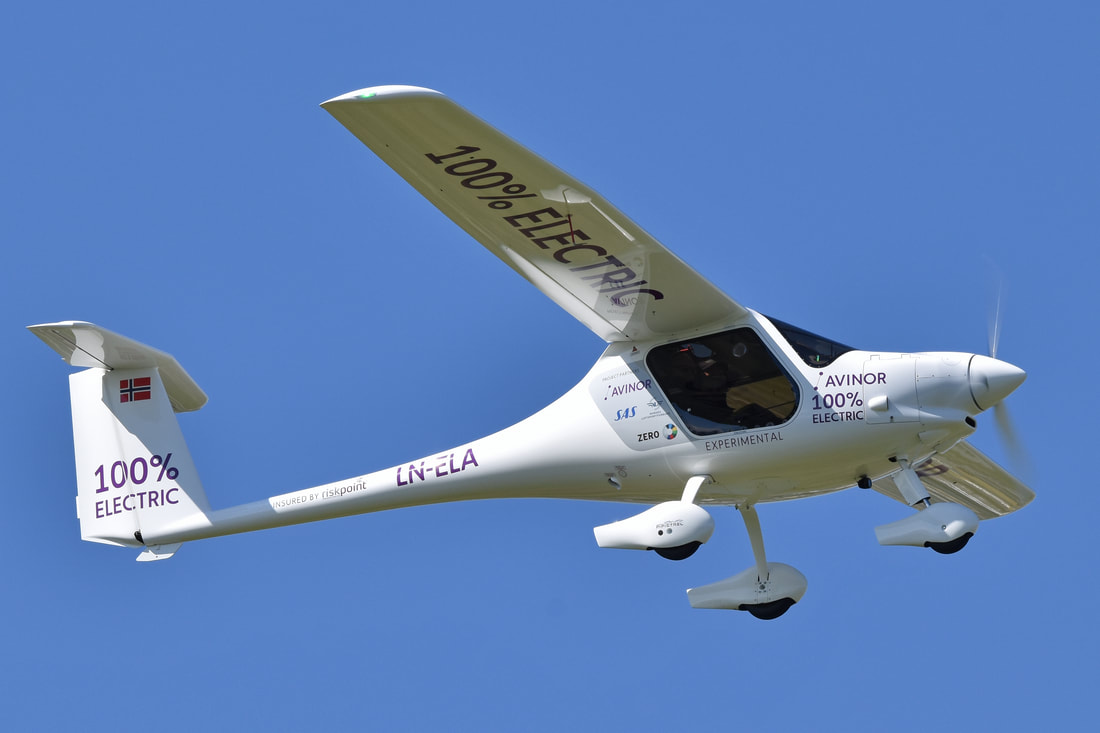We can all agree that the problems created by operations from local airports are an issue for health, safety and wellness of those living around these airports. Where the rubber hits the roads is in finding solutions to these problems that can benefit both the airports themselves and the nearby residents. Below we have proposed a number of solutions, from large to small. Keep reading for further details.
Limiting Touch and Goes
Touch-and-go operations are a clear safety hazard to local residents. Both the airport sponsor and Air Traffic Control (ATC) tower have a legitimate case to present to the FAA. Given the high volume of flight training at this airport and the inability of these aircraft to maintain an altitude above 1,000 feet in the downwind during continuous takeoffs and landings, a request to ban touch-and-go operations is warranted.
|
Arguments for Action:
1. Safety: The 1,000-foot minimum regulation over congested areas is designed to ensure safety by providing a buffer for errors. However, aircraft performing touch-and-go operations (continuous take offs and landings) in this pattern frequently fly under this minimum, creating significant risks for residents. In addition, FSDO has said that during warmer months, piston-engine aircraft often operate at altitudes of 400-500 feet due to reduced engine performance which also results in violations of the recommended 1,000-foot rule. That ALONE should warrant a ban on touch and gos. |
2. Congestion: Continuous touch-and-go operations create congested flight patterns over residential areas, increasing the likelihood of accidents. This congestion extends the air traffic pattern around the airport and heightens safety risks for more residents. Additionally, it raises the likelihood of ATC errors and contributes to controller fatigue.
3. Revenue Generation: Imposing landing fees would provide additional revenue for the airport, contributing to its financial sustainability and reducing the frequency of touch-and-go operations. |
Enforcement of Existing Rules and Regulations by the FAA
Title 14 of the Code of Federal Regulations, Section 91.119 of the General Operating and Flight Rules states that:
Except when necessary for takeoff or landing, no person may operate an air-craft below the following altitudes: (a) Anywhere. An altitude allowing, if a power unit fails, an emergency landing without undue hazard to persons or property on the surface. (b) Over congested areas. Over any congested area of a city, town, or settlement, or over any open air assembly of persons, an altitude of 1,000 feet above the highest obstacle within a horizontal radius of 2,000 feet of the aircraft. (c) Over other than congested areas. An altitude of 500 feet above the surface, except over open water or sparsely populated areas. In those cases, the air-craft may not be operated closer than 500 feet to any person, vessel, vehicle, or structure. |
As has been demonstrated time and time again, General Aviation aircraft have a tendency to disregard this regulation. Is it because they are unaware, or is it because of lax enforcement? Either way, the problem created is the same. With the advent of flight-tracking software, it has never been easier to determine the precise altitude and location of aircraft that violate these regulations. The FAA could reduce many of the dangers from these low-flying aircraft by taking reports filed seriously and enforcing those rules that are currently on the books.
Enforcement of Existing Rules and Regulations by the Airports
Each airport operating in the region has its own sets of rules and regulations that users of the airport contractually agree to abide by when taking off or landing from that airport. Some of these rules and regulations pertain to flight altitudes, hours of operations, and flight patterns. Although these rules and regulations are not under the purview of the FAA, they are fully within the control of airport management, and up to management to address and enforce consequences should these rules and regulations not be followed by any users of the airport, but largely those who are based at the airport and have had ample time and knowledge to understand and apply with these conditions.
1.5 Enforcement |
1.2 Applicability and Conditional Use of Airport |
Citizen Participation + Representation
The fundamental problem is that the interests of Jefferson County, RMMA and the FAA are misaligned with the interests of surrounding communities and local governments that are negatively impacted by airport development and operations. Without first addressing this fundamental issue, progress to reduce the noise that negatively impacts surrounding communities is not possible.
It is glaringly obvious that there is limited to no influence that individual citizens, or even individual municipal governments, have in effecting real change in airport operations, development plans and new tenants. One only need read the summary of the Louisville & Superior CNR efforts of dated 4/9/2019 to reach the same conclusion. The following excerpt from the summary is especially poignant:
It is glaringly obvious that there is limited to no influence that individual citizens, or even individual municipal governments, have in effecting real change in airport operations, development plans and new tenants. One only need read the summary of the Louisville & Superior CNR efforts of dated 4/9/2019 to reach the same conclusion. The following excerpt from the summary is especially poignant:
Q: Can Superior or Louisville exert control over the RMMA and/or their operations? |
That summary was written two years ago after more than a year of complaints from people in the communities affected by the noise started, and here we are. Three meetings into a new CNR discussing the exact same issues!! What solutions resulted from the Louisville & Superior CNR that were implemented and actually reduced noise? RMMA updated their Voluntary Noise Abatement Procedures, hung a sign up at the airport and made a post on the RMMA FB page with a link to the revised procedures. However, this hasn’t reduced noise.
The fundamental problem is that the interests of Jeffco, RMMA and the FAA are misaligned with the interests of surrounding communities that are negatively impacted by airport development and operations. Until this changes, nothing will change. It doesn’t matter how many 3-minute speaking segments we use to share about how we're impacted, or how many flight density maps that we show with areas that are completely black from so many flights, or how high the mountain of facts are that we provide to back up our claims. No meaningful action will be taken that reduces the noise that we deal with daily until the fundamental problem is resolved.
The fundamental problem is that the interests of Jeffco, RMMA and the FAA are misaligned with the interests of surrounding communities that are negatively impacted by airport development and operations. Until this changes, nothing will change. It doesn’t matter how many 3-minute speaking segments we use to share about how we're impacted, or how many flight density maps that we show with areas that are completely black from so many flights, or how high the mountain of facts are that we provide to back up our claims. No meaningful action will be taken that reduces the noise that we deal with daily until the fundamental problem is resolved.
Misalignment of Interests
RMMA is located squarely at the intersection of Broomfield, Jefferson and Boulder Counties, adjacent to the communities of Broomfield, Louisville, Superior and Westminster. RMMA is owned, managed and controlled solely by Jeffco, but RMMA’s land development and operations decisions negatively impact not only northern Jefferson County, but also the surrounding communities of Broomfield, Louisville and Superior, as well as residents in Broomfield and Boulder counties.
A few examples of the existing misalignment of interests between Jefferson County, RMMA and surrounding communities are:
|
neighborhoods whose residents’ seek the quiet enjoyment of
their homes.
Alignment of Interests
Definition - An arrangement in which all parties stand to benefit from a particular outcome.
In order for RMMA and surrounding communities to coexist peacefully, their interests must be aligned around a common goal, with all parties benefiting from the achievement of that goal. How can we blend these seemingly mutually exclusive goals:
|
A potential solution is for RMMA to be owned, managed and controlled by the same governments who are a party to the CNR IGA.
|
Airport ownership and management by a cooperative group of local governments will help to ensure coordination of land use planning, as well as the benefits and impacts of RMMA development and operations.
The following description of a “sponsor” is found in section V. Airport and Local Land Use Planning Processes Page V-36 (FAA): Sponsor Commitment The airport sponsor is responsible to the extent reasonable for ensuring that land uses around the airport are compatible with existing and future airport operations. When the airport sponsor is a city and or county government, the government also is responsible for promoting the general welfare of its citizens, which includes the health and safety of all residents. There are approximately 7,650 publicly owned GA airports in the country, which means there are probably as many local communities and airport owners confronted with the need to balance development pressures while maintaining a safe airport environment. An airport sponsor should initiate coordination efforts with surrounding communities to ensure that existing and future airport development is compatible with the land use plan for the area. Jefferson county government and RMMA has failed at both ensuring that land uses around the airport are compatible with existing and future airport operations and promoting the general welfare of its citizens, which includes the health and safety of all residents. This must be rectified. |
One of many reasons that both RMMA leadership and representatives from the FAA have provided for unbridled growth in operations is due to the economic nondiscrimination grant assurance #22 found in the FAA document Assurances - Airport Sponsors (3/2014):
22. Economic Nondiscrimination.
However, Section 22 also states:
|
Non-leaded Fuel Alternatives
|
There is a common argument when it comes to lead in aviation fuels that it is necessary to reduce engine knock or for the performance of the engines, especially at high altitude. The claim that no sufficient fuel replacement exists is factually incorrect. Swift Fuels makes a product called UL94 Avgas, which it says "is FAA-approved for over two-thirds of the U.S. piston fleet, or more than 125,000 aircraft". According to Swift Fuels, UL94 Unleaded Avgas satisfies the minimum octane requirements...as a 'Drop-in Ready' Unleaded Avgas. It requires no modifications and no hardware changes."
The argument that it is too expensive to make or distribute is just an excuse. Swift Fuels products "can be licensed for low-cost bulk production from major fuel producers". It does require a separate tank from the 100LL, which may be disincentive for airports to stock more than one type of fuel. Instead of going for the lowest common denominator, airports have the opportunity to be on the leading edge of this technology that does not drop leaded exhaust on the residents who live near these airports. In order to encourage adoption of this unleaded fuel, Swift Fuels has also offered to cover the costs of the STC certificate for owners at no additional charge. Their fuels are also competitive with 100LL and other standard aviation fuels, especially in bulk. And it performs equally well at high altitudes, so should not be a problem for flights in Colorado. What is missing is the willingness by Colorado's airports to adopt an unleaded fuel alternative that can service the majority of aircraft in the state. This can be to the advantage of everyone in the |
avaiation industry. According to Aviaton Pros, "Still lacking however are avgas companies willing to supply airports with aviation-grade mogas as their counterparts in Europe have done for years. Consumers like choices, and aviation fuel should be no exception. Europeans have figured this out, and as a result today enjoy a vibrant aircraft and engine manufacturing industry that once was America's claim."
Swift Fuels is also developing a fuel alternative that they hope will fully replace the 100LL by 2023. As this fuel will be compatible with the 100LL, it will not require facilities to upgrade their infrastructure to accommodate this unleaded fuel. Although it is available to any airport that requests it, not one single airport in Colorado is currently selling UL94. Another fuel alternative is Mogas. Mogas (also called autogas) is lead-free, ethanol-free gasoline that meets ASTM D4814 specifications, which includes most automotive fuel. Mogas has been an FAA-approved aviation fuel since 1982, when the first mogas STCs were approved. It is capable of powering 70-80 percent of all legacy piston aircraft, most radial-engine, vintage, experimental and LSA category aircraft. Today, only Vance Brand Airport in Longmont sells this gas - the only airport in Colorado to currently do so.
|
Engine Mufflers
Electric Planes
We know that there is growing economic and political pressure to reduce greenhouse gas emissions from fuel for transportation. And the problem in aviation is compounded by lead in av gas. Lead is unsafe at any level. Across the world, as well as in the United States, there is a race to develop new technologies to achieve greener skies. Aviation is the only mode of transportation that really has not moved aggressively towards zero emissions.
|
The technology for smaller planes is already well established. Here are some examples:
Joseph Oldham is using Chandler Airport in Fresno, California to help launch a new age of flight with Pipistrel Alpha Electros, the first certified all-electric airplanes in the world. He emphasizes that electric propulsion systems are relatively simple and easily adopted for flight, especially for smaller planes. JoeBen Bevirt founded Joby Aviation in 2009. The aircraft he and his team designed is now in-flight testing for FAA certification. It's the current leader in the race to fill the world with electric air taxis. It carries a pilot and four passengers under six tilting motors. This aircraft is good at hovering and cruising. The efficiency in cruise is provides the range and allows for speed. It can go as fast as 200 miles per hour and has a range of 150 miles. They plan to transform the way we move and will manufacture millions of these aircraft. |
We live in times that demand action to address the climate emergency. Proponents of electric aviation say their business models do not rely on altruism but instead on the free market. RMMA, as well as other regional airports, could become a hub of development and manufacture for small electric aircraft. This would bring jobs and a sustainable income without compromising the health of surrounding communities.
It is time to stop living in an echo chamber of “the way it is is the way it will always be.” It is time to change the paradigm.
It is time to stop living in an echo chamber of “the way it is is the way it will always be.” It is time to change the paradigm.
Remote Tower Project
|
The FAA is currently testing a remote tower that would allow touch-and-go training flights, in addition to other types of flights, to be moved elsewhere, minimizing their disturbance of residential and other densely populated areas. According to the FAA:
|
Although the Non-Federal Policy & Oversight Program regulates Remote Tower Systems, none are currently approved for non-federal use in the National Airspace System (NAS). |
Colorado is currently testing a Remote Tower Project at the Northern Colorado Regional Airport in Loveland, although testing was delayed due to the pandemic. Resuming testing of this system would greatly alleviate the impact of flight training operations and those living around and within any transit path of a regional airport.


